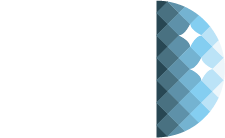Our news
Read our blog articles, press releases, scientific publications, etc.
France, world champion in lighting reduction
Published on June 24, 2024
Christophe Plotard
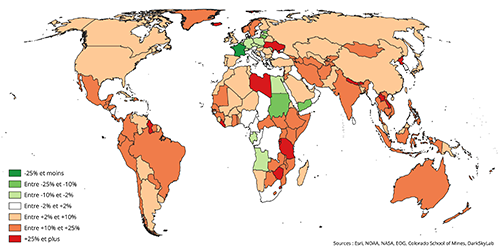
Radiance levels (light emissions) measured by satellite fell by 25% in France between 2022 and 2023, and by 38% in ten years. Excluding special cases (wars, etc.), mainland France is the world leader in terms of artificial light reduction.
Evolution of nocturnal satellite radiance between 2014 and 2021
Published on February 3, 2023
Philippe Deverchère
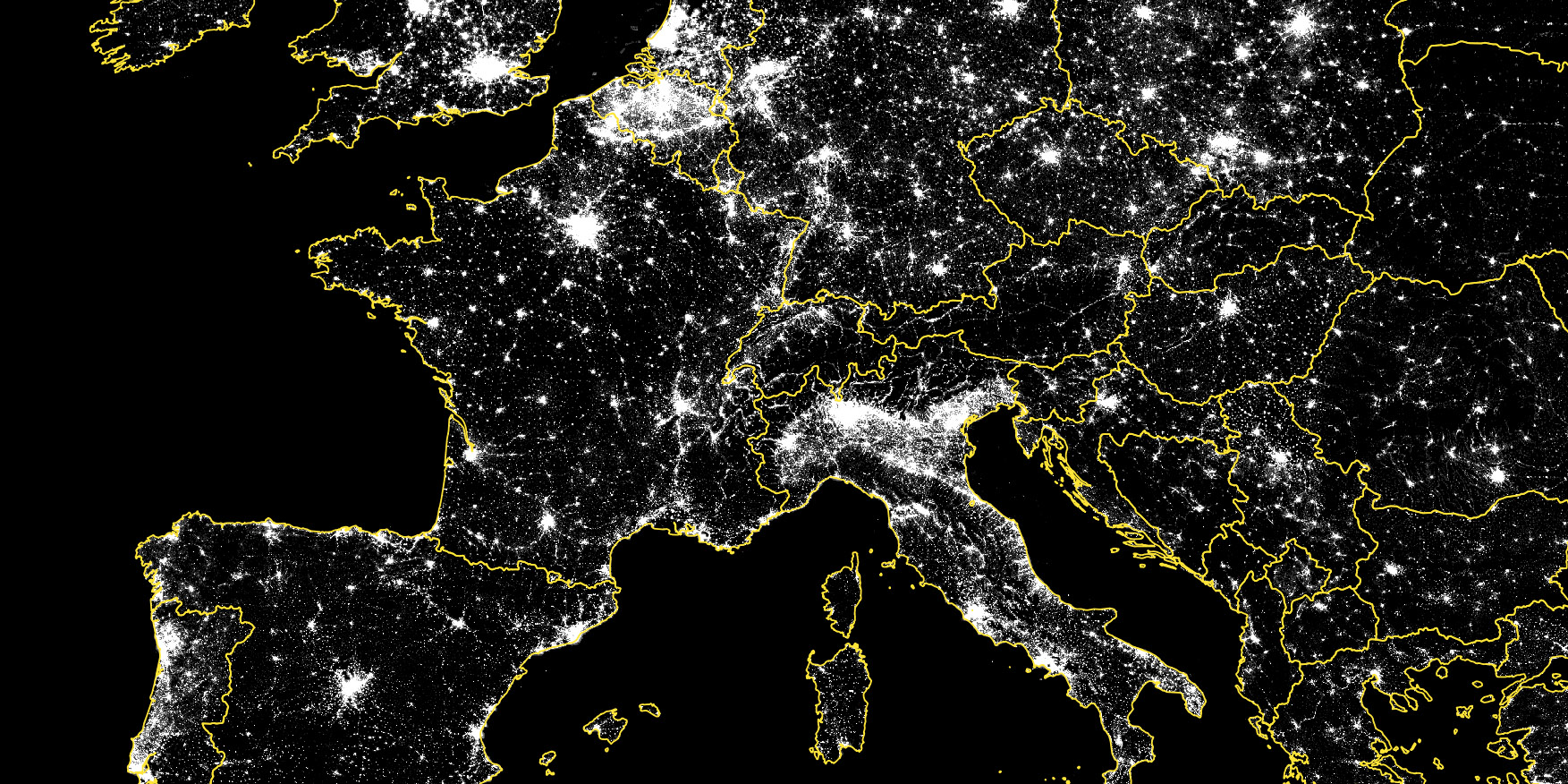
A recent article in the journal Science (Citizen scientists report global rapid reductions in the visibility of stars from 2011 to 2022) reports a rapid deterioration in the quality of the night sky on a global scale between 2011 and 2022, based on campaigns to estimate sky quality with the naked eye (participatory science project Globe at Night organized by the NOIRLab).
Clouds and light pollution
Published on October 20, 2022
Philippe Deverchère
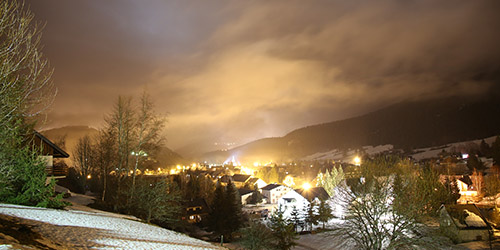
A cloudy sky that turns into a luminous cover at night. Light pollution, which deprives astronomers of access to the starry sky on clear nights, has an even more severe effect on biodiversity when the sky is overcast. The reflection of light on clouds causes a sharp increase in light pollution. Artificial light levels can increase by a factor of 10 to 30 compared to levels reached under clear-sky conditions.
Sky brightness in Chile's Rio Hurtado valley
Published on March 22, 2021
Philippe Deverchère
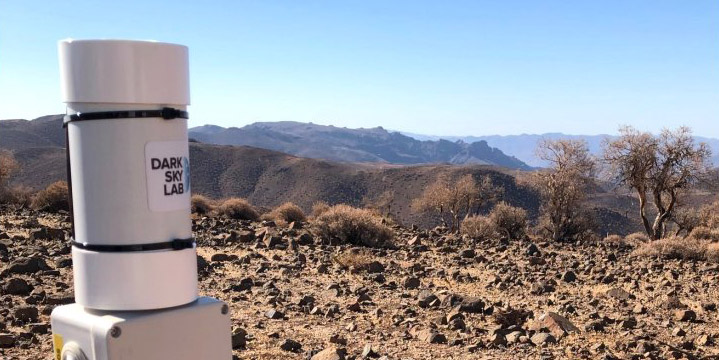
Deep Sky Chile operates a telescope hosting site in Chile's Rio Hurtado valley (see DeepSkyChile). A Ninox sky luminance measurement system (we wouldn't dare talk about measuring "light pollution" on such a site...) was installed there in November 2020 and has been accumulating measurements without interruption since then.
Lighting greenhouses and light pollution
Published on July 25, 2020
Philippe Deverchère
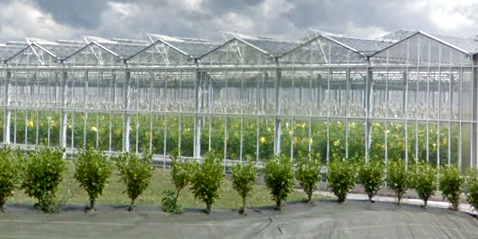
Many districts are making efforts to switch off public lighting at the dead of night, in order to reduce light pollution and help preserve biodiversity. But these efforts are often thwarted by the increase in light pollution from private lighting. This is particularly the case in Finistère, where many greenhouses are used to grow winter tomatoes.
A perfect night in the Cévennes
Published on February 13, 2020
Philippe Deverchère
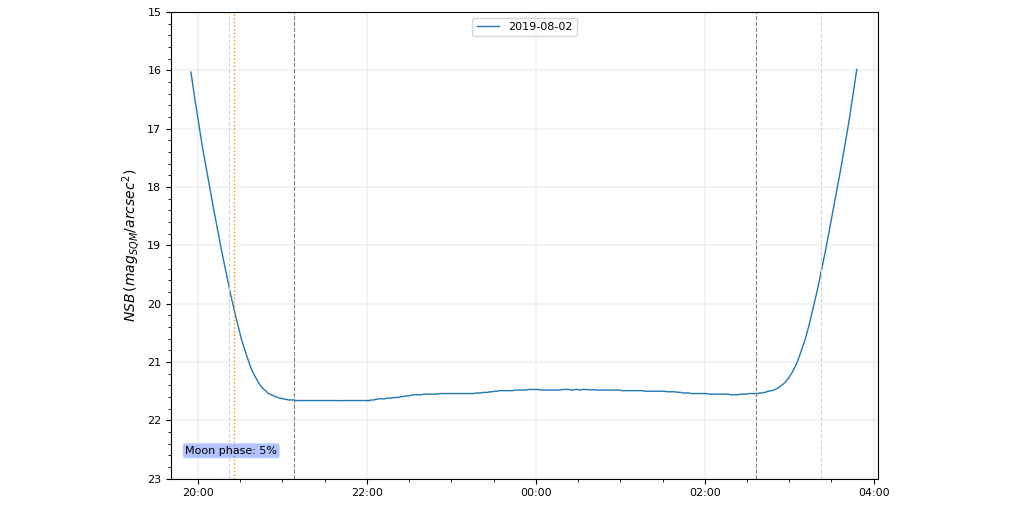
The night of August 2 to 3, 2019 was a night like few others, in the heart of the Cévennes National Park. At a place called L'Aire-de-Côte in the commune of Bassurels, to the east of Mont Aigoual and in the southern part of the Parc National's core zone, a Ninox system recorded the luminance of the background sky at zenith, which can be described as "perfect" that night.
Light pollution maps of France for clear and overcast skies
Published on August 03, 2018
Philippe Deverchère
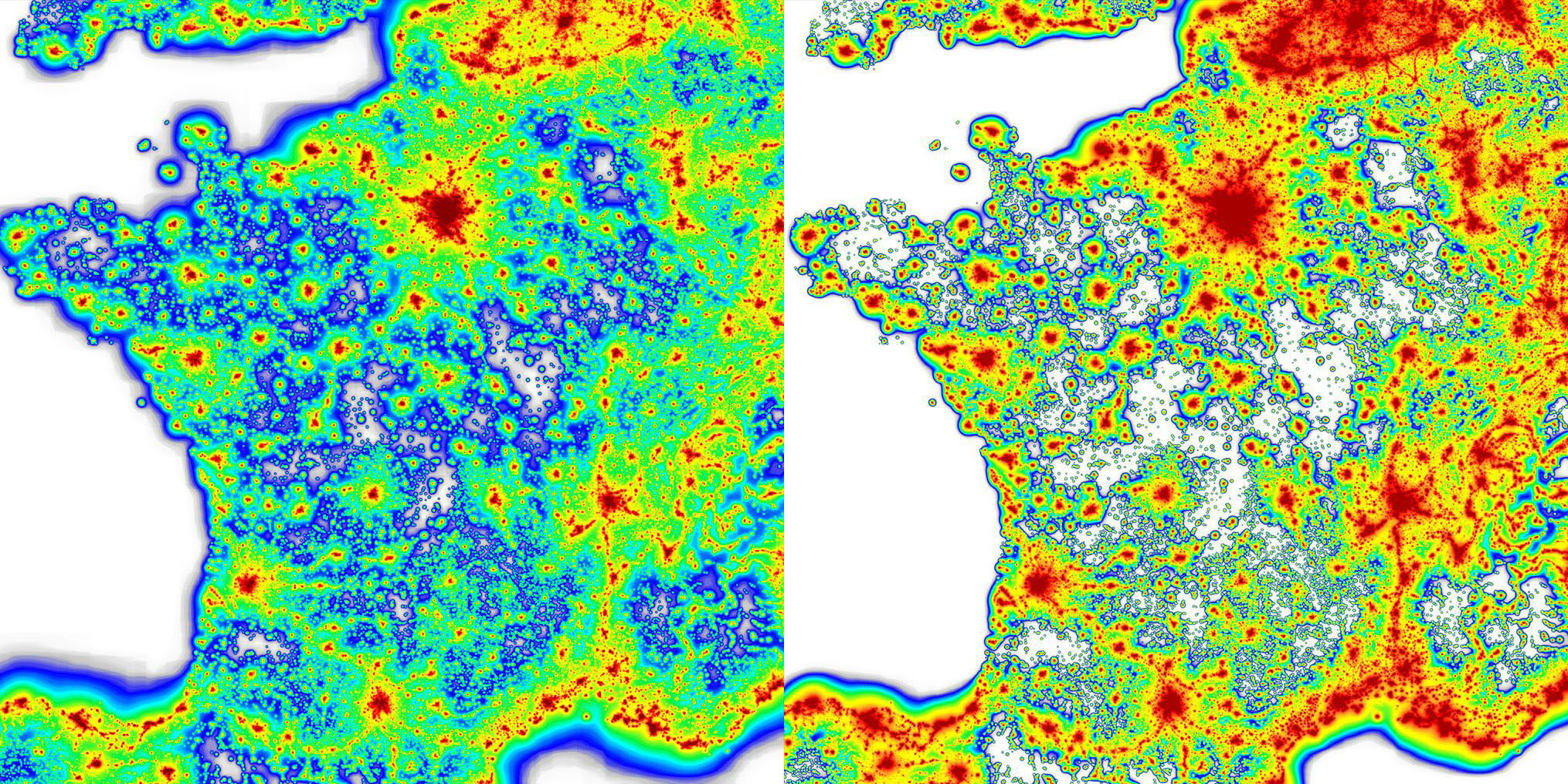
A complete simulation of mainland France was carried out with the Otus software using the simulation mode that takes as input VIIRS/DNB satellite radiance data (2015 annual composite data -- see page VIIRS/DNB on the NOAA site). This simulation was carried out under clear sky conditions and also taking into account cloud cover (overcast skies of more than 95%).
Otus simulations using satellite radiance data
Published on July 30, 2018
Philippe Deverchère
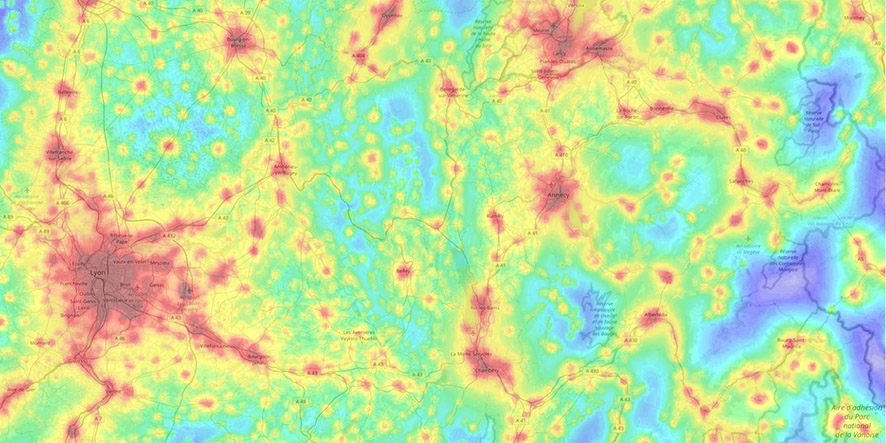
The Otus simulation software developed by DarkSkyLab now features a new simulation mode based on VIIRS/DNB satellite radiance data. The map above shows, for example, the entire region east of Lyon, including the cities of Geneva, Annecy and Chambéry.
National indicators on light pollution
Published on July 28, 2018
Philippe Deverchère
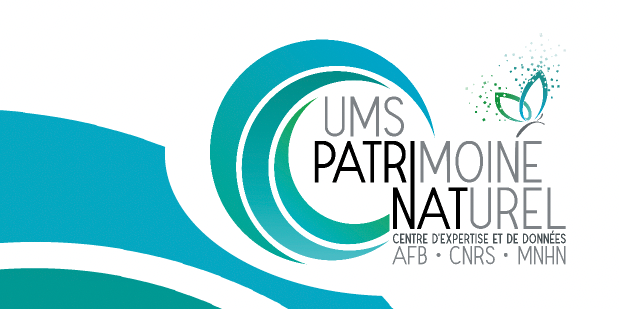
DarkSkyLab took part in the reflection led by the UMS Patrimoine Naturel to develop national indicators around light pollution. The report Construire des indicateurs nationaux sur la pollution lumineuse - Réflexion préliminaire is freely consultable.
Video of the OMP seminar in Toulouse
Published on March 23, 2018
Sébastien Vauclair
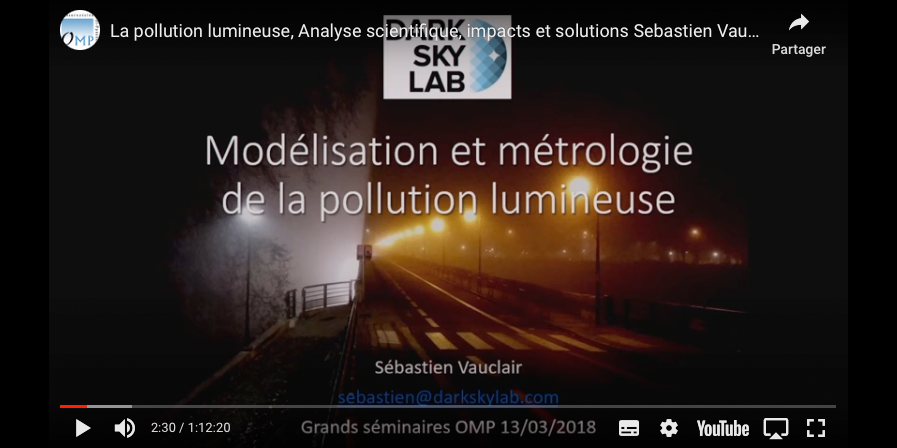
Sébastien Vauclair, manager of DarkSkyLab, gave two seminars in the pink city on March 13, 2018 as part of the Midi-Pyrénées Observatory's major seminars.
The recording of the lecture given by Sébastien Vauclair, is available above.
Ninox Z2 prototype
Published on March 17, 2018
Gonzague Bosch et Philippe Deverchère
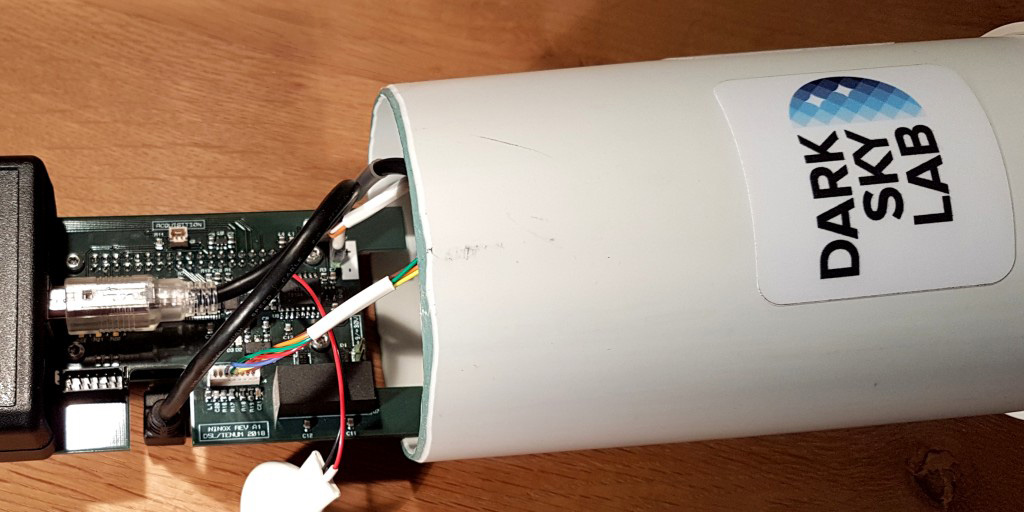
The current version of Ninox, the Ninox Z1, integrates a platform that automates the continuous acquisition of NSB values and maintains accurate time thanks to an on-board RTC clock.
The future version of Ninox, the Ninox Z2, is currently under development, and a photo of the prototype is shown opposite. It will integrate on a single electronic board all the components needed to acquire…
Lighting from advertising in Paris
Published on May 1, 2017
Philippe Deverchère
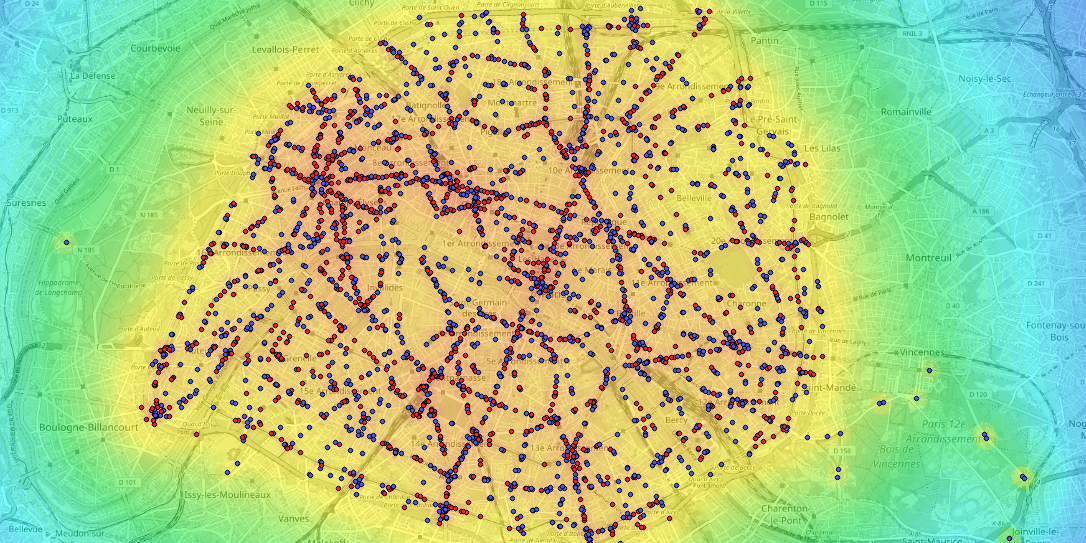
The City of Paris has provided Open Data access to street lighting data. The data itself is accessible on the Paris Data website. We applaud this willingness to make these data sets available to the public in great detail (particularly with regard to geolocation and device power). France's other major cities would do well to draw inspiration from this initiative and make this data of general interest available to the public.
Flying over the Ossau valley
Published on December 10, 2016
Philippe Deverchère
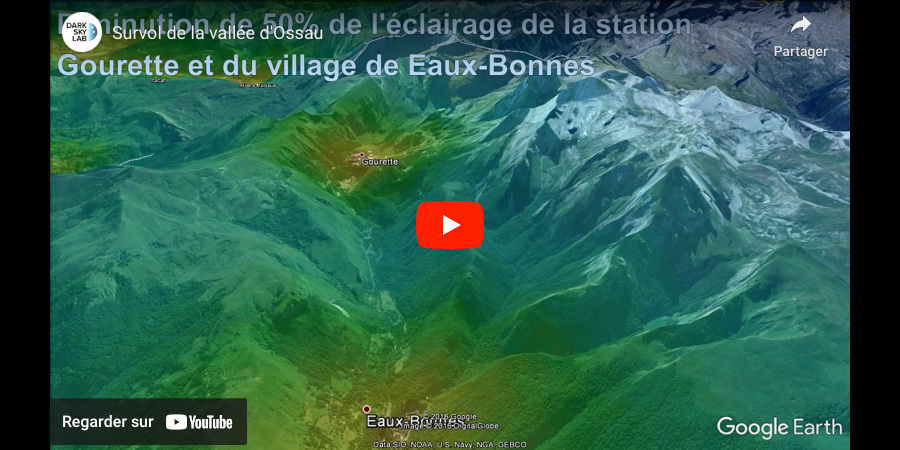
The Ossau Valley is one of 3 valleys in the Bearn Pyrenees. As part of the study of dark ecological network for the Pyrenees National Park, DarkSkyLab has carried out simulations using detailed street lighting data. An example of the results of these simulations is shown in the video below, in which we fly over the Ossau valley.
Light pollution from the Pic du Midi
Published on December 05, 2016
Philippe Deverchère
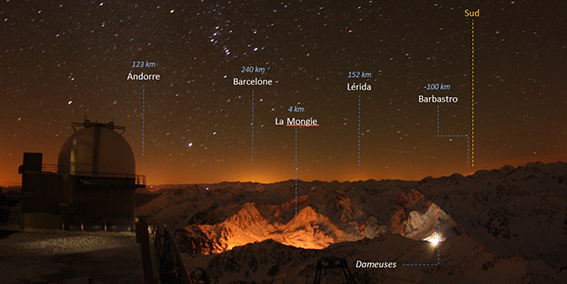
During the nights of December 2 and 3, 2016, images were taken from the Pic du Midi de Bigorre observatory to assess the light pollution halos over approximately 270° of azimuth from north to west, passing through the east and south.
Simulation model for PNP/PNR-PA
Published on November 30, 2016
Philippe Deverchère
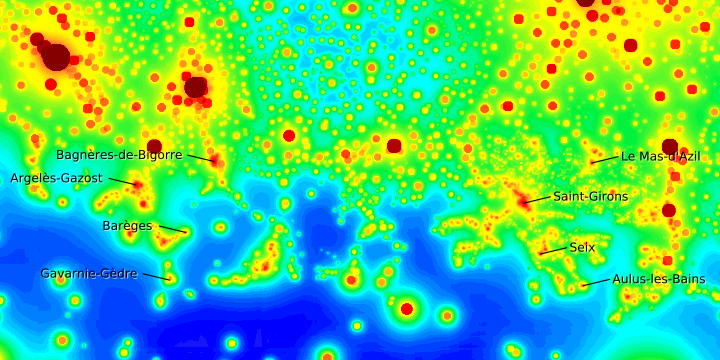
A study has recently been carried out to produce, among other things, light pollution maps for the Parc National des Pyrénées and the Parc Naturel Régional des Pyrénées Ariégeoises. We describe here the Otus simulation model that was used in this context.
